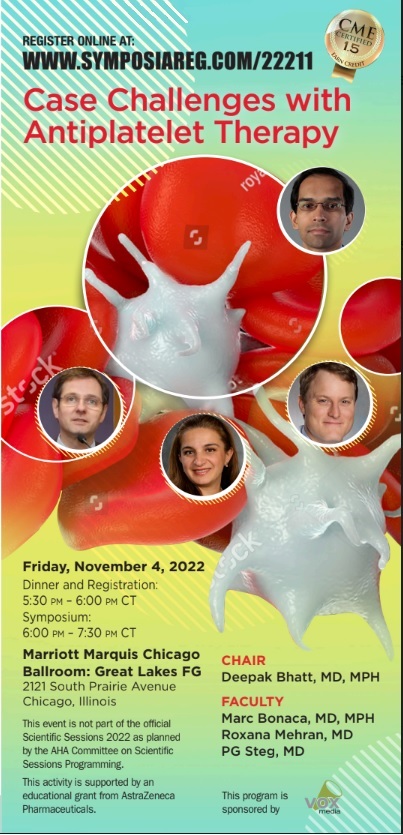 |
Dinner and Registration: 6:00PM - 6:30PM CT Registration for this program is now closed. |
|
Program Overview:
Finding the right balance between maintaining the efficacy of preventing ischemic events without incurring bleeding-related harm in patients with coronary artery disease (CAD) remains an issue in the "real-world " practice of cardiologists. An awareness of the multiple factors to consider when assessing ischemic risk and bleeding risk is required in order to tailor the intensity and duration of antiplatelet therapy after percutaneous coronary intervention (PCI) to the individual patient. Dual antiplatelet therapy (DAPT) remains the cornerstone of therapy for the prevention of ischemic complications after PCI. However, the reduction in risk of ischemic events with DAPT comes at a cost of increased bleeding; patients at high bleeding risk (HBR) may be effectively and safely managed with antiplatelet therapy bleeding risk-reduction strategies. Conversely, other patients at high ischemic risk after full-term DAPT may be candidates for either extended DAPT or dual pathway inhibition (DPI), consisting of aspirin (ASA) plus factor Xa inhibition. In this program, experts in the use of antiplatelet therapy (Program Chair Dr. Deepak Bhatt, with faculty members Dr. Marc Bonaca, Dr. Roxana Mehran, and Dr. Philippe Gabriel Steg) will describe best practices for assessing ischemic risk and bleeding risk after PCI, and in 3 challenging cases, supported by current clinical trial evidence, identify patients for bleeding risk-reduction strategies with antiplatelet therapy, and patients for consideration of prolonged dual therapy.. |
|
|
Educational Objectives:
Accreditation & Credit Designation:
| |

